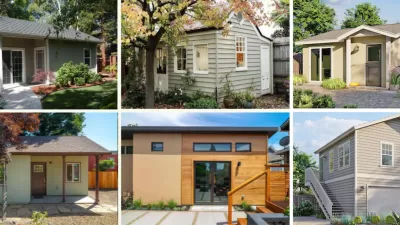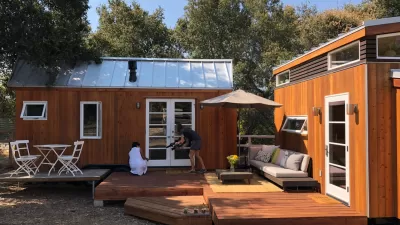The state recently legalized accessory dwelling units in residential districts, but there’s more state lawmakers can do to reduce other hurdles to large-scale ADU production.

An analysis from the Niskanen Cetner by George Ashford, Andrew Justus, Alex Armlovich reveals lessons for Hawaii based on California’s legalization of accessory dwelling units (ADUs), which Hawaii legalized earlier this year.
More states and cities are encouraging the construction of ADUs as one way to boost the housing supply, gently increase density in residential areas, and offer an avenue for homeowners to earn extra income. In Hawaii, SB3203 requires the creation of new zoning districts that permit at least two ADUs on single-family lots.
“Unlike in California, where pro-housing legislators have spent nearly a decade easing ADU restrictions, Hawaii law allows local governments to set restrictive development standards for ADUs. This is not uncommon; most states making their first effort to allow ADUs leave exploitable loopholes, which result in underwhelming initial outcomes.” The authors suggest that Hawaii should follow California’s lead to ensure that local governments don’t impose undue burdens on potential ADU builders.
The article highlights California’s successes, noting that “California saw nearly 28,000 ADU permits in 2023, constituting 21% of total housing permits for that year.” To address restrictions that hold back ADU development like minimum lot sizes, floor-area ratio, street frontage, and setback requirements, California passed a ‘statewide exemption ADU’ that sets standards for ADUs that override local regulations. “In other words, it requires local governments to waive requirements that would make a reasonably sized ADU infeasible.”
The analysis addresses other hurdles including unnecessary fees, parking requirements, and owner-occupancy requirements, which can also limit the effectiveness of ADU legalization. To further streamline the development process, California also requires cities to create a set of pre-approved building plans that homeowners can choose from to avoid lengthy permitting processes. This type of policy can both reduce costs for homeowners and let cities have more influence over aesthetics and design.
FULL STORY: What Hawaii can learn from California’s long and bumpy road to ADU stardom

Trump Administration Could Effectively End Housing Voucher Program
Federal officials are eyeing major cuts to the Section 8 program that helps millions of low-income households pay rent.

Planetizen Federal Action Tracker
A weekly monitor of how Trump’s orders and actions are impacting planners and planning in America.

Canada vs. Kamala: Whose Liberal Housing Platform Comes Out on Top?
As Canada votes for a new Prime Minister, what can America learn from the leading liberal candidate of its neighbor to the north?

Washington State’s Parking Reform Law Could Unlock ‘Countless’ Acres for New Housing
A law that limits how much parking cities can require for residential amd commercial developments could lead to a construction boom.

Wildlife Rebounds After the Eaton Fire
Following the devastation of the Eaton Fire, the return of wildlife and the regrowth of native plants are offering powerful signs of resilience and renewal.

LA to Replace Inglewood Light Rail Project With Bus Shuttles
LA Metro says the change is in response to community engagement and that the new design will be ready before the 2028 Olympic Games.
Urban Design for Planners 1: Software Tools
This six-course series explores essential urban design concepts using open source software and equips planners with the tools they need to participate fully in the urban design process.
Planning for Universal Design
Learn the tools for implementing Universal Design in planning regulations.
Central Transportation Planning Staff/Boston Region MPO
Heyer Gruel & Associates PA
Institute for Housing and Urban Development Studies (IHS)
City of Grandview
Harvard GSD Executive Education
Regional Transportation Commission of Southern Nevada
Toledo-Lucas County Plan Commissions





























